Kathleen Flinn's Blog, page 9
March 2, 2021
Recipe: Easy Grilled Lamb with Rosemary & Olives and Instant Pot White Beans
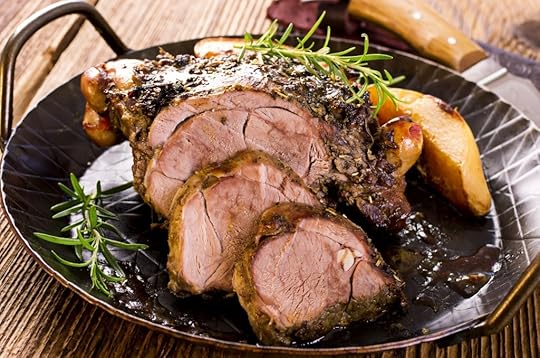
This easy grilled lamb dish is my favorite recipe from The Sharper Your Knife, the Less You Cry. In the book, it’s listed by its French name, Agneau grillé mariné aux olives, artichauts et tomates.
High quality olives make all the difference in this dish, so don’t skimp. Go to a deli and get a glistening Mediterranean mix, or pick up this great mix from Trader Joe’s.
Key to grilling: Butterfly the Leg
A butterflied leg is simply one with the bone remove and slit open like a book. This makes for an easy grilled lamb main with lots of flavor. With the bone removed, you can lay it flat on the grill and maneuver it as needed. Supermarket butchers will sometimes butterfly a leg if you ask nicely, while any full service butcher will do it and be sure to give you the bone. If you’ve got a sharp knife and the confidence, it’s not hard to do yourself and takes about 15 minutes. BBC Good Food has a good video primer. I add the bone into with the beans for extra flavor.
Ideally, the lamb should marinate overnight in the refrigerator and be brought back to room temperature before grilling. If you don’t have that kind of time, marinate for at least a couple of hours. I utilize this same recipe for steaks cut from a lamb leg when serving just two or three people. White northern and Cannelloni beans work well. I use a mix of fresh rosemary and thyme for the herb mix in the marinade.
Instant Pot the White Beans
I start the beans from dried, something I strongly recommend. (I’m a fan of Bob’s Red Mill Cannelloni beans.) These days, I use my Instant Pot to cook dried beans in my Instant Pot as they’re cooked in less than an hour and no soaking is required. You’ll find instruction on how to cook dried white beans in your Instant Pot at the bottom of the recipe below. No Instant Pot? Saute the initial ingredients as directed and allow it to cook for about two hours, adding water if needed to keep the beans moist.
Round out this easy grilled lamb with perfect mashed potatoes and rosemary popovers.
 PrintEasy Grilled Lamb with Rosemary & Olives and Instant Pot White BeansA great holiday recipe or just something different to put on the grill during summer. You can also make the white beans on their own. One note: if the lamb doesn't come butterflied, ask the butcher to do it. You can add the bone to the beans for extra flavor, or just treat your dog. Course Main CourseCuisine French, Greek, ItalianKeyword BBQ, Christmas, Easter, good grilling recipes, grill, holidays, Lamb, marinated, olives, PassoverServings 8 peopleEquipmentElectric pressure cookerIngredientsLamb and marinade4 ½ to 6 pounds (2 to 2.5 kgs) boneless leg of lamb butterflied¾ cup (80 g) high quality olives, pitted1 tablespoon coarse salt2 teaspoons ground black pepper1 cup mixed fresh herbs chopped6 tablespoons olive oil6 cloves garlic peeled, smashedJuice of two lemonsBeans4 ounces 125 g salt pork or thick cut bacon, cubed1 medium onion chopped (about 1 cup)2 medium carrots chopped (about 1 cup)1 pound (500 g) dry white beans1 sprig fresh rosemary2 bay leaves3 tablespoons fresh thyme chopped or 1 tablespoon dry2 cloves garlic chopped1 14 oz can chopped, seeded tomatoes2 16 oz cans artichokes hearts, drained2 quarts (2 liters) chicken stock2 tablespoons butter2 tablespoons fresh parsley choppedHot sauce such as TabascoInstructionsMarinade the lamb Combine the ingredients in a small food processor. Blend until the olives and garlic are minced, and the mixture emulsifies. Slather on the lamb, and set into a non-reactive bowl and cover with plastic wrap. Marinate at least two hours or overnight. Make the beansStart the beans in a 6 qt. electric pressure cooker by sauteing the salt pork or bacon slowly over low heat until browned. Add the onion and carrots until softened. Add the beans, rosemary sprig, bay leaf, thyme, garlic, tomatoes, artichokes and enough chicken stock to cover the beans by about three inches. Secure the top and set to Manual for 28 minutes, allowing 10 to 15 minutes for pressure to build. Allow the pressure to release naturally according to your manufacturer's instruction, about 10 to 30 minutes. Grill the lambDiscard marinade, pat the meat dry with paper towels. If grilling a whole leg, start cooking the fat side down, about 15 to 20 minutes per side or until a meat thermometer reaches 125°F/ 51°C degrees for medium rare. Let lamb rest for 10 minutes before slicing. Finish the beansFinish beans with butter, salt, pepper and hot sauce to taste. Remove rosemary sprig, bay leaves, stir in chopped parsley. Serve with sliced lamb.
PrintEasy Grilled Lamb with Rosemary & Olives and Instant Pot White BeansA great holiday recipe or just something different to put on the grill during summer. You can also make the white beans on their own. One note: if the lamb doesn't come butterflied, ask the butcher to do it. You can add the bone to the beans for extra flavor, or just treat your dog. Course Main CourseCuisine French, Greek, ItalianKeyword BBQ, Christmas, Easter, good grilling recipes, grill, holidays, Lamb, marinated, olives, PassoverServings 8 peopleEquipmentElectric pressure cookerIngredientsLamb and marinade4 ½ to 6 pounds (2 to 2.5 kgs) boneless leg of lamb butterflied¾ cup (80 g) high quality olives, pitted1 tablespoon coarse salt2 teaspoons ground black pepper1 cup mixed fresh herbs chopped6 tablespoons olive oil6 cloves garlic peeled, smashedJuice of two lemonsBeans4 ounces 125 g salt pork or thick cut bacon, cubed1 medium onion chopped (about 1 cup)2 medium carrots chopped (about 1 cup)1 pound (500 g) dry white beans1 sprig fresh rosemary2 bay leaves3 tablespoons fresh thyme chopped or 1 tablespoon dry2 cloves garlic chopped1 14 oz can chopped, seeded tomatoes2 16 oz cans artichokes hearts, drained2 quarts (2 liters) chicken stock2 tablespoons butter2 tablespoons fresh parsley choppedHot sauce such as TabascoInstructionsMarinade the lamb Combine the ingredients in a small food processor. Blend until the olives and garlic are minced, and the mixture emulsifies. Slather on the lamb, and set into a non-reactive bowl and cover with plastic wrap. Marinate at least two hours or overnight. Make the beansStart the beans in a 6 qt. electric pressure cooker by sauteing the salt pork or bacon slowly over low heat until browned. Add the onion and carrots until softened. Add the beans, rosemary sprig, bay leaf, thyme, garlic, tomatoes, artichokes and enough chicken stock to cover the beans by about three inches. Secure the top and set to Manual for 28 minutes, allowing 10 to 15 minutes for pressure to build. Allow the pressure to release naturally according to your manufacturer's instruction, about 10 to 30 minutes. Grill the lambDiscard marinade, pat the meat dry with paper towels. If grilling a whole leg, start cooking the fat side down, about 15 to 20 minutes per side or until a meat thermometer reaches 125°F/ 51°C degrees for medium rare. Let lamb rest for 10 minutes before slicing. Finish the beansFinish beans with butter, salt, pepper and hot sauce to taste. Remove rosemary sprig, bay leaves, stir in chopped parsley. Serve with sliced lamb. Please note this page may contain affiliate links. Originally published in 2009, updated in 2021.
The post Recipe: Easy Grilled Lamb with Rosemary & Olives and Instant Pot White Beans appeared first on Kathleen Flinn.
January 28, 2021
Recipe: Miso-Marinated Black Cod

In October 2018, I donned some unattractive kitchen whites and spent two jet lagged, caffeine-fueled days at the Tokyo Sushi Academy. Many lessons and stories came out of those 48 hours. Among them, this recipe for miso-marinated black cod, now one of my go-to dishes.
I hadn’t expected to spend nearly 18 hours with a famous sushi master. The entire situation had been set up by my Tokyo publisher for a book project. Called Sakana Lesson (“Fish Lesson”), so far it is available only in Japanese.
 With famed sushi master, Fumimisa Murakami at the Tokyo Sushi Academy
With famed sushi master, Fumimisa Murakami at the Tokyo Sushi Academy At the academy, we used a miso marinade to soften and flavor the flesh of barracuda. (Yes, I filleted a barracuda.)
After two days, the once white fillets took on a beige hue from the marinade. Eating the grilled fish, its subtle taste took me by surprise. The marinade’s flavor softened, tempered by sugar and mirin, a sweet Japanese wine.
Although this is a classic method used all over Japan, I based my version on a recipe from Nobu: The Cookbook. The restaurant’s miso-marinated black cod has been a menu staple for decades. It’s a splurge of a dish, even though it’s a simple preparation. What you’re paying for is the three days’ it takes to marinade.
Wait, it marinades for days?Yes. Marinating fish for two or three days’ sounds like crazy idea, but hear me out. All you do is put together a few ingredients and put it in the fridge. One day three, you can take it out, sear it and finish it in the oven, making it either an easy weeknight meal or main for guests.
In that time, the fish takes on the salty, sweet and savory flavor. When cooked, the sugars caramelize giving the fillet a dark, molasses-y exterior while the interior exudes an almost nutty flavor. As a finished dish, the elegant and complex taste belies the ease of making it.
Fish options, side dishesI use Alaskan wild-caught black cod, which has a higher-than-normal oil content which makes it fairly forgiving in terms of cooking as it’s less likely to dry out or overcook than other fish.
If black cod isn’t an option, try Alaskan halibut, Pacific cod or any firm cold water white fish.
Pair with some simple rice, braised greens or even steamed vegetables. To give your side dishes a Japanese flair, check out my Cheat Sheet to Flavor Profiles or learn how to whip up a simple Japanese dressing.
 PrintMiso-Marinated Black CodThis recipe, adapted from Nobu: The Cookbook, uses a simple marinade made from miso, mirin, sake and sugar help to preserve and flavor the fish, while gently bathing it to soften its protein. It’s best marinated at least overnight or, as Chef Nobu Matsuhisa suggests, up to 72 hours. The original recipe calls for black cod, which I generally use since it’s sustainably fished in the U.S. and it has a wonderful texture when cooked. But any firm, mild white fish will work. Pair it with rice, some simple braised greens and voila, dinner. White miso can be found in many grocery stores in the refrigerated section; it tends to be located next to the tofu. Mirin is a little trickier and may require a stop at an Asian foods store or ordering it online. Serves four. Course Main CourseCuisine JapaneseKeyword Bento, Black Cod, Easy, Fish, Japanese, Miso, Seafood, WeeknightServings 4EquipmentWhiskBaking Sheet with foilSmall sauce panGlass dish (for marinating in fridge)Stainless or cast iron saute pan or skilletIngredients¼ cup mirin¼ cup sake⅓ cup white miso paste1/4 cup sugar4 Black cod fillets about 6 ounces/110 grams eachVegetable or avocado oil for cookingInstructionsCombine the mirin and sake in a small saucepan over high heat. Bring to a boil. Turn heat to low and whisk in the miso until dissolved. Turn the heat back up and add the sugar. Stir in until the sugar completely melts, whisking quickly to assure the sugar doesn’t burn at the bottom. Transfer to a glass dish. Let cool to room temperature, then add fish and turn to coat. Cover snugly with a lid or wrap and refrigerate at least overnight, but preferably three nights.When ready to cook, preheat oven to 400°F/200°C. Prepare a heavy rimmed baking sheet by greasing it with a light coat of vegetable or avocado oil. Set aside.Heat a tablespoon or so of oil in a large pan over medium-high heat. Wipe the marinade off the fish. If your fish has skin, put into the pan flesh side down. When the oil shimmers and starts to smoke lightly, add the fish. Give it a shake to assure it doesn’t stick. Cook until browned and a white line rises from the bottom, about 2 minutes. Flip the fish onto the prepared pan and put into the hot oven to roast for 8 minutes. It’s done when it just begins to flake and it’s cooked through to the center; an instant-read thermometer should read 140°F/60°C.
PrintMiso-Marinated Black CodThis recipe, adapted from Nobu: The Cookbook, uses a simple marinade made from miso, mirin, sake and sugar help to preserve and flavor the fish, while gently bathing it to soften its protein. It’s best marinated at least overnight or, as Chef Nobu Matsuhisa suggests, up to 72 hours. The original recipe calls for black cod, which I generally use since it’s sustainably fished in the U.S. and it has a wonderful texture when cooked. But any firm, mild white fish will work. Pair it with rice, some simple braised greens and voila, dinner. White miso can be found in many grocery stores in the refrigerated section; it tends to be located next to the tofu. Mirin is a little trickier and may require a stop at an Asian foods store or ordering it online. Serves four. Course Main CourseCuisine JapaneseKeyword Bento, Black Cod, Easy, Fish, Japanese, Miso, Seafood, WeeknightServings 4EquipmentWhiskBaking Sheet with foilSmall sauce panGlass dish (for marinating in fridge)Stainless or cast iron saute pan or skilletIngredients¼ cup mirin¼ cup sake⅓ cup white miso paste1/4 cup sugar4 Black cod fillets about 6 ounces/110 grams eachVegetable or avocado oil for cookingInstructionsCombine the mirin and sake in a small saucepan over high heat. Bring to a boil. Turn heat to low and whisk in the miso until dissolved. Turn the heat back up and add the sugar. Stir in until the sugar completely melts, whisking quickly to assure the sugar doesn’t burn at the bottom. Transfer to a glass dish. Let cool to room temperature, then add fish and turn to coat. Cover snugly with a lid or wrap and refrigerate at least overnight, but preferably three nights.When ready to cook, preheat oven to 400°F/200°C. Prepare a heavy rimmed baking sheet by greasing it with a light coat of vegetable or avocado oil. Set aside.Heat a tablespoon or so of oil in a large pan over medium-high heat. Wipe the marinade off the fish. If your fish has skin, put into the pan flesh side down. When the oil shimmers and starts to smoke lightly, add the fish. Give it a shake to assure it doesn’t stick. Cook until browned and a white line rises from the bottom, about 2 minutes. Flip the fish onto the prepared pan and put into the hot oven to roast for 8 minutes. It’s done when it just begins to flake and it’s cooked through to the center; an instant-read thermometer should read 140°F/60°C.Finished dish photo by Magdanatka
The post Recipe: Miso-Marinated Black Cod appeared first on Kathleen Flinn.
December 16, 2020
Recipe: Easy Peppermint Bark
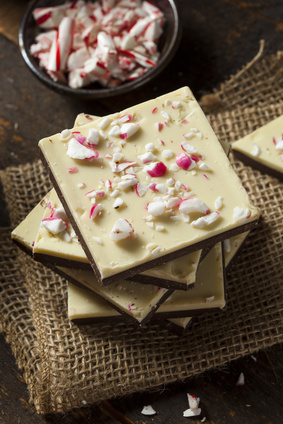 A confession: I don’t like chocolate.
A confession: I don’t like chocolate.
I don’t loathe it, I just don’t love it. This news always takes people by surprise. Somehow by the mere fact of my gender, it’s assumed that I must immediately be in love with all things dark and sweet. However, taste can be so highly individualized, and pesky in nature. Give me a choice between a wedge chocolate cake and a slice of banana cream pie, you’ll find a banana-soaked remains of a crust within seconds. By contrast, I once had a quart of chunky double chocolate ice cream in my fridge for two years until a friend house-sitting at my place after a break-up with her boyfriend ate the whole thing in one sitting.
This proved an issue when I worked as a restaurant reviewer. When I first wrote reviews, I often skipped dessert. After all, I’m not a dessert person. But then I was working with Tom Sietsema, now the reviewer for The Washington Post. He said, “Kat, dessert is the reason why some people have to go out. You must put your personal preferences aside for the sake of your readers.” So I plowed through endless cakes, creme brulee and died what felt like a thousand deaths by chocolate.
Throughout the years, I’ve grown to love one thing that’s decidedly chocolate based: my sister Sandy’s peppermint bark. Part dark chocolate, part white and topped with candy canes, it somehow defeats my anti-chocolate bias. It’s also easy to make and wrapped up in a nice container, it makes easy holiday gifts. My sister used to spend a full weekend day making pounds of it to give to her magazine staff around the holidays packed into tidy, colorful boxes. I looked forward to getting one every year. She’s semi-retired now and no longer works in an office, so she doesn’t do the marathon bark making anymore so I am going to make a big batch this year instead.

Recipe: Easy Peppermint Bark
This is my sister Sandy's recipe. You'll need parchment paper to make the recipe work properly; don't try to replace it with aluminum foil or plastic wrap. The bark looks attractive either cut or broken into ragged pieces. I pllace in cookie boxes lined with red cellophane. Keep refrigerated for freshness.
Course Holiday
Prep Time 20 minutesCook Time 35 minutesTotal Time 55 minutes
Author Kathleen Flinn
Ingredients11 oz. bag dark chocolate chips11 oz. bag white chocolate chipsSeveral candy canes crushedParchment paper
InstructionsMelt dark chocolate chips in a double boiler until smooth. Lay out a large sheet of parchment paper on a cookie sheet. Spread out an even layer of melted dark chocolate over the parchment (about 1/8”- 1/4” thick). Cool in the freezer for 20 minutes. While cooling, melt the white chocolate chips in a double boiler.Remove the cookie sheet from the freezer (the chocolate should be hardened) and spread a layer of melted white chocolate over the entire piece of dark chocolate. This should be about the same thickness as the dark chocolate. Sprinkle liberally with crushed candy canes. Gently push candy canes into the white chocolate, just enough so they won’t fall off when cool.Return the cookie sheet to the freezer and let cool for 30 minutes or until hard.
Originally published December 2014, updated December 2020.
The post Recipe: Easy Peppermint Bark appeared first on Kathleen Flinn.
December 3, 2020
19 Ideas for Holiday Leftovers
 Kentucky Hot Browns: a masterful use of holiday leftovers
Kentucky Hot Browns: a masterful use of holiday leftoversPersonally, I think leftovers are the best part of any holiday dinner. When I go shopping for the main meal, I think ahead to what I’ll do with the leftovers. Will ham be on the table? I’ll pick up split peas or beans. Turkey or ham? I plan on making stock or soup from the bones.
A few years ago, I quizzed food writer friends about what they did with their holiday leftovers. Here’s some advice from them, along with some fresh ideas.
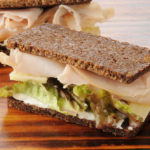 1. Update the traditional leftover sandwich
1. Update the traditional leftover sandwich“I just recently created some holiday recipes for a grocery store and some of them used leftover turkey,” Amy says. “One of my absolute favorite recipes was a turkey, jack cheese and cranberry sauce melt on whole wheat bread.” A great example: her grilled cheese, pear and turkey sandwich.
“Turkey is really good in all kinds of grilled cheese sandwiches, so get as creative as you like with it,” Sherman says. ” Try it with chutney, slices of apple, tomato, roasted red pepper or a layer of leftover cooked vegetables like sautéed spinach or creamed onions. You could even use turkey or ham in a Reuben (in place of pastrami) or Cuban sandwich (in place of the roast pork). I like cheddar, jack or swiss cheese paired with turkey. Grilled cheese turkey sandwiches are so easy to make even kids can make them. Best of all they let you enjoy some of the flavors of Thanksgiving in a fresh way.”
 2. Make a Drink with the Cranberry Sauce
2. Make a Drink with the Cranberry SauceSeriously. For an elegant post-holiday toast, make a simple cranberry champagne cocktail by putting a teaspoon into the bottom of a flute and top with sparkling wine. Alternately, you can try my recipe for a “Crantini” for a post-shopping break. Combine 1 1/2 oz. gin, 1/2 oz. Cointreau, 1 teaspoon cranberry sauce in a shaker with ice. Shake vigorously and pour into chilled martini glass. Garnish with lime wedge.
3. Mashed potato patties
Olga Massov has a terrific idea for leftover veggies. “One of my favorite things to do is to take leftover mashed potatoes and make these mashed potato patties with them and whatever leftover vegetables I have. Usually it’s caramelized onions and/or squash so I just combine them (cut the squash into smaller pieces if need be), bind with an egg, and fry in olive oil. I mix a lemon-dill yogurt dipping sauce and voila – vegetables reborn. It makes for a really delicious post Thanksgiving lunch!”
4. Kentucky Hot Browns
My brother’s family has lived in Louisville for more than a decade. When my niece was married at the famed Brown Hotel, the meal options for the reception included a Kentucky Hot Brown. Looking around the room, it appeared 95% of the guests were tucking into one. A Hot Brown is basically an option faced sandwich topped with turkey, thin slices of tomato and a creamy cheese sauce. This is broiled until it’s slightly browned and bubbly and then topped with slices of bacon. I often skip the bacon and top the tomato with diced ham (if it was part of the meal) and then broil it. In place of the tomato, I’ve used leftover green beans or Brussel sprouts with great results. Try the original recipe from The Brown Hotel.
 5. Make Stock
5. Make Stock“I always make stock,” says Sheri Wetherall, the editor-in-chief of Foodista.com. “I roast the carcass with carrots, onions, celery and whatever yummy root veggies I have on hand until the bones are dark and golden, then simmer it for a long time on as low as I can get it until I have a luscious broth! I freeze it in small-sized batches for soups throughout the year. Check out my latest take on bone broth/stock for tips on how to extract the most goodness from those bones. Works for beef, turkey or chicken bones.
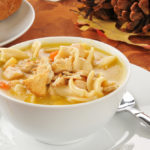 6. Make Soup
6. Make SoupWhen you’ve got the stock, you can make a wide range of soups. You can keep the flavor of the holiday meal or really change it up. Check out my Soup 101 guide for how to make soup out of virtually anything, including bean soup from a ham bone. Meanwhile, here a couple of my favorite options from food writer friends:
Comforting Turkey Potato Soup from the WhiteOnRiceCouple.com
Turkey Soup with Lemon and Barley from SimplyRecipes.com
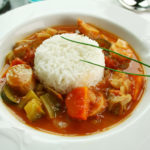 7. Turkey Gumbo
7. Turkey GumboJaden Hair of Steamy Kitchen is a fan what I typically do with a leftover turkey: make turkey gumbo. “What’s great about this is that it’s nearly a one-pot meal, easy to make and has such intense flavor that’s DIFFERENT from night-before menu,” Jaden says. I totally agree. See my guide on how to make gumbo out of (almost) anything.
8. Turkey and Dumplings
Keep the comfort food going. Wetherall has a great twist on the classic chicken and dumplings on Foodista.com.
9. Make Meaty Salad
A twist on chicken salad, a simple turkey salad can be an easy lunch when plopped onto a bed of simple greens or put inside a pita. I like this recipe from Kalyn’s Kitchen. Made roast beef? Make a simple green salad, top with blue cheese dressing and slices of roast beef.
 10. Turkey or Beef Pot Pie
10. Turkey or Beef Pot PieA classic. I liked this updated version with cheddar biscuits as the top crust from Just a Taste.
11. Sweet Potato Souffle
If you end up with a lot of mashed sweet potatoes like we seem to every year, consider trying your hand at shifting them into a souffle. Note: this won’t work if you covered up their naturally sweet flavor with tons of syrup or marshmallows. Marla Meredith at FamilyFreshCooking.com has a lovely recipe for sweet potato souffles with feta and sage.
 12. Fry the Leftover Sage Leaves
12. Fry the Leftover Sage LeavesI did this a couple of years ago. It genuinely intensifies the flavor and adds a certain something to a leftover sandwich or even crumbled into a dish. Saveur’s recipe is the best one I’ve found.
 13. Try Turkey Curry
13. Try Turkey CurryRemember the opening of Bridget Jones Diary? Every New Year’s Day, Bridget’s mother hosted her turkey curry buffet. I found it hard to get a turkey in November. Why? They don’t celebrate Thanksgiving and turkey tends to be reserved for Christmas dinner. Curry is a very traditional means to dispatch the leftovers from the holiday turkey. I’ve used this recipe from the BBC site for the past couple of years. When it calls for “double cream,” you just use whipping cream. I’ve used sweet potatoes in place of the butternut squash.
 14. Make croutons
14. Make croutonsIt seems like there’s always leftover rolls and bread from holiday meals. You can only eat so many sandwiches or consume so many carbs. Don’t throw it away. Dice it up, toast it and make it into croutons.
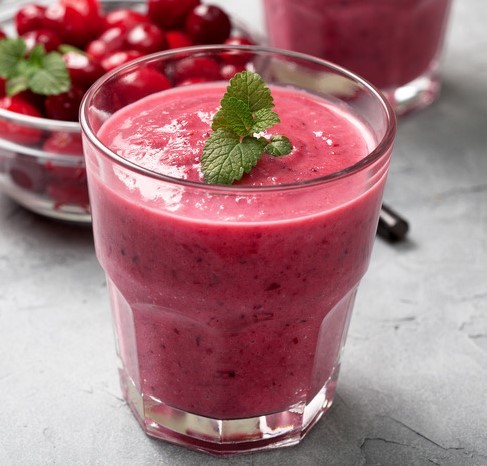
15. Orange Cranberry Smoothies
Even a couple tablespoons of cranberry sauce can transform a simple smoothie. In a blender, combine a few tablespoons of leftover cranberry sauce, ¼ cup orange juice, ½ cup yogurt, a banana, a bit of honey and blend together. Taste and add a bit more honey if needed.
16. BLT Turkey Tacos with Cranberry Salsa
I tried this recipe from How Sweet Eats a couple of years ago. I admit that I use tortillas something of a crutch to use up leftovers. This felt like a great complement to the carb heavy holiday meal with a few crumbles of bacon tossed in to complement the sweetness of the cranberry salsa.
17. Turkey Panzanella
By definition, the famed Italian summer lunch dish, panzanella, is itself a leftover dish. In this classic Tuscan dish, chunks of stale white bread are tossed with sliced onions, chopped tomatoes and basil then soaked with a vinaigrette made with good olive. Take the leftover rolls and bread from the dinner and toast lighter if not sufficiently stale, make a lemony vinaigrette and toss in chopped turkey, tomatoes and herbs.
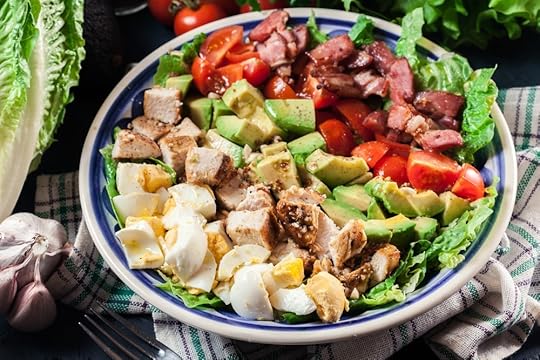 Use up leftover turkey and ham in a composed salad, such as a Cobb
Use up leftover turkey and ham in a composed salad, such as a Cobb18. Turkey or Ham Cobb Salad
If you’re ready to go low carb after the big dinner, a cobb salad is just the ticket. Grab a couple avocados, tomatoes and some bleu cheese when you’re shopping for the rest of the meal. After that, all you have to do is boil a couple of eggs. Take leftover turkey and ham (or bacon) and voila!
19. Meatballs from Leftover Stuffing
Finely chop turkey and mix leftover stuffing with an egg and leftover stuffing and Italian seasoning and bake for about 10 minutes. Put on a roll with some cheese for a lovely meatball sandwich. If you want more traditional meatballs with beef (or a plant-based ground protein), check out this recipe from Good Housekeeping.
Originally published in 2014. Updated November 2020.
The post 19 Ideas for Holiday Leftovers appeared first on Kathleen Flinn.
November 25, 2020
Roast Turkey Breast with No-Fuss Gravy

With so many people opting for smaller holiday meals this year, I wanted to share my foolproof method of roasting a turkey breast.
I rarely roast a whole turkey. I usually break my turkeys down and cook the dark and white meat separately as they require different cooking times and I can better control the outcome. Also, I’m not spending hours and hours wrangling a large, hot bird in an out of an equally hot oven, a scenario in which I have been burned (literally) one too many times. Approached separately, a turkey breast and legs can be cooked in about two hours with much less fuss. I then reassemble on a platter so it resembles the original bird.
This strategy also allows me to use the back and neck to make a long-simmered turkey stock before the holiday. I use this technique year-round as a healthier alternative to deli count turkey.
One key to this technique is turning the breast over after an hour. This will assure the underside of the bird is cooked through. I find many roast breasts recipes don’t call for this and it can lead to under cooking the meat close to the bone. I recommend tongs for this duty but picking up the bird with a clean dish towel works fine, too.

You don’t need a special roasting pan for this version. A simple 9×12 Pyrex will work perfectly well. Do let the butter sit out at room temperature as it will be easier to spread on the skin. Once you’ve tried this, feel free to experiment with seasonings and vegetables. I often add mushrooms and even some squash as I like the earthy flavor they add to the finished gravy.
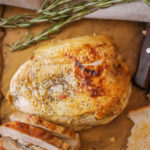
Roast Turkey Breast
Simple and less time consuming than cooking a whole turkey, a whole bone-in roast breast can easily serve four to six people. All you need is a simple roasting or casserole pan. I've added some vegetables to help capture the turkey's juices to make an easy, yet flavorful gravy.
Course Main CourseCuisine AmericanKeyword Easy, holidays, Poultry, Thanksgiving, Turkey
Servings 6 people
EquipmentRoasting or casserole pan
Ingredients1 5 to 7 pound bone-in turkey breast2 tablespoons softened butter1 tablespoon sage or poultry seasoningcoarse salt, ground pepper2 bay leaves2 medium onions peeled and quartered1 large carrot cut into two-inch pieces1 stalk celery chopped in half1 apple cored and quartered (optional)1 tablespoon flour3 cups turkey stock, homemade or low-sodium storebought
InstructionsTo roast the turkeyPreheat oven to 350F/180C. Pat the turkey breast and/or legs dry with paper towels, slather with the softened butter, season with salt, pepper and sage or poultry seasoning. Spread the cut up onion, carrot, celery, bay leaves and if you desire, apple in the bottom of a small roasting pan.Roast for one hour. Carefully turn the breast over. Roast for another half hour to cook and brown the underside. Reduce heat to 325F. Then, turn over and cook for 30 more minutes or until an instant-read meat thermometer reads at least 155F/68C. Remove from roasting pan to a cutting board or platter. Cover loosely with aluminum foil and rest for at least 20 minutes. As it rests, the internal temperatures will rise to 165F/74C.To make the gravyPour the roasted veggies, bay leaves, juices and fat at the bottom of the pan into a two-quart or larger saucepan over medium-high heat. Heat through, then sprinkled in a tablespoon of flour. Stir to coat the vegetables and cook for two minutes until it smells like popcorn. Add two to three cups chicken stock and stir until thickened. Pout through a sieve or colander to remove the vegetables. Return to the pan and cook over low heat until slightly reduced and to desired thickness.
Main photo by Bockarev Photography. Recipe photo by Africa Studio.
The post Roast Turkey Breast with No-Fuss Gravy appeared first on Kathleen Flinn.
November 18, 2020
Tips on Freezing Meat, Cheese, Milk, Butter and Fish

Reader question: “I have bought far more meat and cheese than usual due to the pandemic and now I am worried about it going bad. Is freezing meat OK? What about butter and cheese? How long will it last?” – Rebecca, Orlando FL
Answer: I have been teaching people cooking in their homes for
years. One of the first things I do is to inventory their fridge and freezer.
For many, the freezer turns into the Land That Time Forgot. I’ve found
14-year-old packages of hamburger in a client’s fridge.
With many people adding in much more food than usual, learning how to safety store foods like meat and cheese in your freezer is a critical lesson. A few key tips:
What Not to Freeze
For starters, don’t freeze anything past its expiration date. Freezing it will not magically make it safe to eat again. Prepared convenience foods from your supermarket generally should not be frozen. This includes those pre-stuffed chicken breasts or chops and fresh salads containing potatoes, eggs or pasta. Canned ham, too, should not be frozen, although whole hams, chops or roasts are fine. Eggs are tricky business. Don’t freeze eggs in their shells – they’ll explode. Hard-boiled eggs or egg substitutes that have been opened are also not freezer candidates. See below for tips on meats, cheese and milk.
Always let food cool before freezing
If you’re making meals and then storing the leftovers, it’s important to cool them and store in the refrigerator before freezing. This will assure that new, hot items will not affect already frozen items. Don’t overfill containers, as foods tend to expand when they freeze, so it’s important to leave a bit of headspace in containers. Also, wait until containers are frozen before stacking them.
Wrap meat twice before freezing
The packaging from your local supermarket alone will not keep your meat and poultry safe in the freezer. The trick to freezing meat, according to the Food and Drug Administration and the Meat Sciences department at Texas A&M University, is to wrap it twice, preferably in heavy duty aluminum foil, plastic wrap or freezer paper, or put the whole package inside a plastic bag. Personally, I remove meat from its plastic and wrap it in parchment, then plastic and then a layer of foil and then freeze. Alternately, you can seal meat, fish and poultry in heavy plastic using a vacuum sealer. This will allow the food to remain frozen longer.
How long will it keep in the freezer?
I recommend printing out this awesome flyer from the FDA has an easy-to-read chart that covers how long to freeze all kinds of food, including meat and cheese. It also includes how long stuff can last in your fridge, too. I keep a copy right on my fridge for easy reference.
Label and date everything
It’s easy to forget what’s what. Do what many professional kitchens do. Use blue painter’s tape and a sharpie to mark down the contents and the date. No tape? Write the contents on a piece of paper and secure in place with plastic wrap. Be sure to check your freezer regularly. One of my classic “clean out the fridge or freezer” recipes is soup. Check out my Soup 101 primer on how to make soup out of (almost) anything.
What about freezing cheese?
According to the National Dairy Board, softer cheeses like mozzarella and
young cheddar can be frozen, especially when shredded. Firmer cheeses, like
aged cheddar become crumbly and shift texture, so plan on using those in
recipes, rather than highlighting on a cheese plate.
There’s an important key to freezing shredded cheese and it’s in the way you
thaw it. This is because cheese contains
a fair amount of moisture and this becomes frost when frozen. Allowing it to thaw
slowly will allow this moisture to get absorbed back into the cheese.
Have blocks of cheese? Chop them into half-pound blocks or smaller and wrap
twice in plastic or freezer bags.

What about milk and butter?
The Dairy Board suggests putting milk into small, air-tight containers
before freezing. Be sure to leave at least an inch at the top because milk,
like other liquids, expands when frozen. Personally, I find that freezing milk
tends to slightly change its taste, so try freezing a small amount to see if
you like it.
Once you’re ready to use the milk, let it thaw completely in the
refrigerator. Milk fats thaw separately than the water in milk, so if it’s not
completely thawed, you may notice that it isn’t smooth. A quick shake or stir should resolve this. Try to use thawed milk within three days.
I always keep butter in my freezer. Unsalted butter can last up to five months and salted can last up to nine. Keep it in its original packaging and then double wrap.
What about freezing fish?
Fish is best when cooked the day you buy it. If it must sit overnight, consider placing it on top of ice. Often, seafood sold as “fresh” in your supermarket case was previously frozen. Freezing raw seafood twice won’t render it inedible, but it will break down more of the protein so the texture will be a bit mushier when you thaw it again. Like meat, wrap fish twice. I prefer to wrap it in parchment first, then a layer of plastic or aluminum foil. Fish is best left to thaw in the fridge where, like cheese, it can reabsorb frost as moisture into its flesh. Fish are a good option for a vacuum sealer.
Please note: This post contains affiliate links.
The post Tips on Freezing Meat, Cheese, Milk, Butter and Fish appeared first on Kathleen Flinn.
November 16, 2020
How to host a small Thanksgiving

Q. I normally fly home for Thanksgiving for a big dinner. This year, I am staying put, so it will just be me and two close friends in my “pod.” I love the traditional dinner, but a whole turkey with trimmings seems too much. Options?
A. We are in the same place this year. Forget the Norman Rockwell imagery. You could investigate a “dinner in a box” option, particularly from a local restaurant. If you decide to cook, don’t feel compelled to make the usual big meal. Ask yourself what foods you love most on a traditional holiday table. Focus on that and build your meal around it.
This is 2020. People day drink and they do video calls for work wearing pajama bottoms. Do what you want, no one will judge you. No one says you can’t have a cheesy, gooey mac and cheese casserole in place of turkey.
One good option is to gussy up a side up enough to feel like a main. If you look forward to the Brussels sprouts, maybe opt for a Brussels sprouts gratin like this one from SimplyRecipes?

Back when my whole family went vegetarian for a couple years, we made Kim O’Donnel’s veggie pot pies. Round out with your two favorite sides and voila, dinner. (I love these little porcelain tart/pie molds for pot pies.)

If roasted turkey is a must, consider getting a whole bird and cutting it up. This will be more economical and you’ll get the neck for stock and giblets for gravy. (If you buy one from an proper butcher, they may do this for you.) For three to five people, roasting a half breast and one leg should be plenty. Freeze the extra pieces for later. (See my tips on freezing meat.)
Alternately, for a no-cook turkey solution, hit a deli counter and just ask for extra-thick sliced roasted turkey. A half-pound per person should be plenty. To reheat, put it into a pan with a bit of chicken stock. Cover with foil and put into an oven for a few minutes until warmed through to replicate that just-from-the-oven juiciness.

One thing to remember: Zoom will be eliminating its 40-minute limit on Thanksgiving this year. So plan some calls, set up a schedule. If you have no one to call, then I’ll chat with you. Drop me a line.
More Thanksgiving
Sick of Cooking: Get Thanksgiving in a Box
Homemade Mashed Potatoes vs. Instant
Homemade Green Beans vs. Canned
Conventional Turkey vs. Organic
19 Ideas for Holiday Leftovers
This page may contain affiliate links. Images: Turkey plate by Ezume Images; Brussels sprouts by Algus; pot pie by Madele; carved turkey by Bochkarev Photography. Page created November 2020 by Kathleen Flinn.
The post How to host a small Thanksgiving appeared first on Kathleen Flinn.
November 14, 2020
Sick of Cooking? Get Thanksgiving in a Box
 Cajun fried turkey dinner from Williams Sonoma
Cajun fried turkey dinner from Williams SonomaWe are in the final sprint of an exhausting year. Many of us are separated from family and friends. The pandemic has forced us all to spend more time in our homes and our kitchens than ever. So if you don’t feel like cooking a big holiday meal, it’s OK. As someone who encourages people to cook, you might expect a different message for me, but give yourself a break. Maybe this is the year to try something different. Consider these options.
Support a Local Restaurant
 Sous vide spatch-cocked turkey from Addo in Seattle
Sous vide spatch-cocked turkey from Addo in SeattleMany eateries that might normally be closed are offering full Thanksgiving meals or meal kits for delivery or pick up this year, often with a twist on their signature cuisine. Inquire directly with some of your favorites to see if there are offering holiday meals or kits, or check out your local eater.com site or food section. Shake things up with a jerked turkey from a Jamaican joint or a smoked turducken from a BBQ spot. While you’re at it, throw some love to local bakeries for pies and other holiday sweets, as well.
Heat and Serve Meals
 Publix supermarkets Thanksgiving dinner
Publix supermarkets Thanksgiving dinner Many supermarkets offer up heat-and-serve meals. Years ago, I did a comparative tasting on a few for a food client. The sides from large chains tend to be on the bland side. If your budget allows, check out local supermarkets or higher-end markets, too.
Turkeys in these packages tend to be cooked, then frozen, and thus can take hours to reheat, often as long as making a bird from scratch, so allow time for it. These tends to provide good deals ($9 per person and up), and save you time shopping in a busy supermarket during a pandemic. You still have the option of making one or two family favorites to round out the meal.
Holiday Meal Kits
 Collards and carrots from Blue Apron’s 2020 Thanksgiving offerings
Collards and carrots from Blue Apron’s 2020 Thanksgiving offeringsA hybrid that allows you the joy of cooking without the non-joy of shopping. Again, check with local restaurants to see if they’ve got a meal kit on offer.
Hello Fresh: Their turkey dinner bundle serves 8 to 10 people, so if you’re a small group, you’ll have a lot of leftovers. If you’re not into turkey, they offer a beef tenderloin dinner for four to six. $16 per person
Home Chef: Customize your meal, as every dish is al a carte. The main protein is a roast turkey breast to serve six, not a whole turkey, but that’s a good thing if you’ve got a small crew. Varies
Blue Apron: This year, Blue Apron partnered up with James Beard award winner Chef Edouardo Jordan from Seattle, who focuses on Southern-focused dishes. His meal serves six to eight and features roasted pork tenderloin anchoring the meal instead of turkey. Sides include cheesy mashed potatoes, braised greens and carrots with a ginger-honey dressing. About $14 per serving.
Martha & Marley Spoon: Martha Stewart offers a variety of side dishes. No turkey, but roast chicken and mashed potatoes are on the menu for November 23rd. About $17 per person.
Purple Carrot: Skip the turkey and go fully plant-based with roasted squash as a savory main, rounded out by fresh takes on traditional sides. After all, yur grandma probably didn’t put kimchi butter in her Brussels sprouts. About $18 per person.
Fancy & Delivered
 Cranberry stuffing casserole from Williams Sonoma
Cranberry stuffing casserole from Williams SonomaWilliams Sonoma: This upscale kitchen store which will ship you everything from and in full Cajun fried Turkey with all the trimmings. $35 per person and up.
McKenzie Ltd.: Get a complete meal with your choice of a Cajun-style deep fried turkey or turducken with all the traditional sides. $28 per person and up.
The post Sick of Cooking? Get Thanksgiving in a Box appeared first on Kathleen Flinn.
November 12, 2020
Kat’s Turkey FAQ
 That’s me, age four, stuffing a turkey. I’ve been doing this holiday dinner thing a long time. So much information exists on the humble turkey, a curiously popular bird. Here are simple answers to common questions from reliable sources. Please note this page includes affiliate links. Have a question? Let me know. – Updated November 2018
That’s me, age four, stuffing a turkey. I’ve been doing this holiday dinner thing a long time. So much information exists on the humble turkey, a curiously popular bird. Here are simple answers to common questions from reliable sources. Please note this page includes affiliate links. Have a question? Let me know. – Updated November 2018
Q. Why do we eat turkey on holidays, anyway?
A. Great question. As this terrific column in Slate explains, back in the day when people grew their own meats, large poultry presented the most expendable option to feed a crowd.
Q. What kind of turkey should I buy?
A. Buy fresh, if possible. Fine Cooking explains the variations on supermarket options, while Epicurious offers their findings on a taste test of common brands. Want local? See EatWild.com’s guide to locally grown turkeys in the U.S. and Canada. Despite all the talk of heritage turkeys, they account for less than 1 percent of the turkey market, as noted in this illustrated account from Bountiful Cupboard.
I’ve cooked all the options, and I’ve found a thoughtfully grown free range turkey does taste better than the standard supermarket varieties. (We usually get a 16 lb. to 20 lb. turkey and it’s about $20 more.) I prefer fresh over frozen as I think the texture of the meat is better after cooking. I’ve splurged on local heritage turkeys, and my family thought they tasted too gamey. I’ve bought kosher birds, but they’re hit and miss. So if you can, buy a free range, organically fed turkey if your budget can afford it.
Q. How big a turkey do I need?
A. It depends on whether you’ve got big eaters and/or big leftover lovers. Aim for roughly 1 pound per person for a reasonable amount of leftovers, and 1.5 pounds per person if you want heaps of extra meat.
Q. I have heard I shouldn’t stuff the cavity. Why is that?
A. The Centers for Disease Control advise against this because the uneven cooking this employs can make people sick. Plus, it will take the turkey longer to cook. Just cook it in a separate casserole pan; you can never make enough in the cavity of the turkey for the whole crowd, anyway.
Q. How do I safely thaw a frozen turkey?
A. Here’s a thorough guide form the USDA on the matter. Bottom line: either thaw a frozen turkey in your fridge, in a cold water bath or – very carefully – in a microwave. Just don’t set it on your counter and let it get to room temperature or you’ll greatly increase your odds of sickening your holiday dinner guests.
Q. Can I cook a completely frozen turkey?
A. Yes. Simply plan for the roasting time to take about 50% longer than a thawed one. Put it into a 325F oven for two hours. Remove from the oven and extract the giblets. Season as desired and continue to roast. Here’s how much time you’ll need to budget for, based on the USDA’s guidelines:
8-12 lbs turkey: 4-4 1/2 hours
12-14 lbs turkey: 4 1/2-5 3/4 hours
14-18 lbs turkey: 6-6 3/4 hours
18-20 lbs turkey: 6 3/4-7 1/2 hours
20-24 lbs turkey: 7 1/2- 7 3/4 hours
Q. Turkey, again? Really? Any alternatives?
A. Personally, I’m a fan of duck or lobsters as a Thanksgiving alternative. The editors of Food & Wine came up with a solid list of alternatives, including a stuffed flat-iron steak.
Q. Help! I have vegetarian or vegan guests coming. Can I serve them Tofurky?
A. The Washington Post did a taste test on alternative faux meats for vegans, so check out those results if that’s your strategy. But I’m going to be honest and say the point of Thanksgiving isn’t about serving non meat eaters a highly processed bit of fake meat. I usually serve turkey and a vegetarian main. My go-to is this vegetarian pot pie recipe from Kim O’Donnell. If you’ve got more than one or two vegetarians at the table, consider making (or buying) a vegetarian gravy, such as this red wine mushroom version from Whole Foods Market.
Q. Do I need to brine the turkey, or can I skip it?
A. You don’t have to wet brine. Indeed, Kim Severson of The New York Times wrote a bombshell story that essentially called it a fad that’s over. A wet brine involves putting the turkey into a solution laced with salt, herbs and usually some acid, such as cider or citrus. Alice Currah at Savory Sweet Life has a great example of how to wet brine a turkey.
Maybe it’s me, but I got to a point where I felt a wet brine made turkey meat soggy. So I’m partial to using a “dry” brine, which involved slathering the bird with a salt-based rub. The clearest and best example we can find of this is Russ Parsons version on Food52.
Q. Do I need special equipment?
A. You need a pan with at least one-inch sides large enough to hold your turkey comfortably without too much crowding. Handles are helpful, as is a rack. You can claim one for as little as $20 online. Avoid disposable, inexpensive aluminum roasting pans. No really. Don’t use them. They aren’t heavy enough to hold the weight of a turkey.
Let me paint you a scene: a cook pulls a golden turkey from the oven, and then the cheap pan crumbles, drenching her in boiling hot liquid as she tries to decide whether to catch th e hot carcass as it tumbles to the floor. This happened to someone I know. Don’t let it happen to you.
e hot carcass as it tumbles to the floor. This happened to someone I know. Don’t let it happen to you.
In a pinch, you can use the bottom of a broiler pan. No rack? No problem. Line the bottom of your roasting pan with carrots, celery, onion or potatoes to keep it from sticking. It will also make your gravy tastes great, too.
Q. What about basting?
A. The jury’s out on whether basting moistens the meat, but it certainly doesn’t hurt anything and will add a lovely sheen to the final result. The easiest way to do it is with a bulb-style baster, but you can also use a silicon pastry brush, a small (new!) paintbrush or even a ladle.
Q. What’s the best way to roast a turkey in the oven?
A. My friend Chef John at Foodwishes.com gives exactly the same instruction I would give you on cooking a turkey in his two-part video lesson. While I normally advise turning chickens over while roasting, most turkeys are too large to do this so skip that step during the holidays. For herb butter, go here.
Q. We want to deep-fry a turkey.
A. Deep-frying a turkey is a popular and highly hazardous undertaking. Search “fried turkey disaster” and you’ll find hundreds of YouTube videos. A solid source for information comes from the blog Brian’s Belly.
Q. Can you grill a turkey?
A. Grilling a turkey has overcome deep-frying as the fad du jour for the holiday bird. It does have two advantages. One, it frees up your oven for all the side dishes. Second, if you’ve got a grill master in the family, you can assign him or her the bird. Whoever takes on this task must absolutely first read Turkey Grilling Horror Stories. My favorite guide to barbecuing a turkey is from Sunset magazine, which featured a cartoon version of meat master Bruce Aidells in a simple how-to.
Q. What the heck is a turducken?
An unholy concoction of a turkey stuffed with a whole duck and a chicken. Here’s where you can get one. The New York Times offers tips on how to cook it.
Q. How do I carve a turkey?
A. I know the Norman Rockwell image involves bringing a whole turkey to the table. But this leads to performance anxiety. Solution? Call people to the table, bring the whole roasted turkey in for “viewing,” and then whisk it back to the kitchen and carve it while everyone gets seated.
Ditch the carving set. The best tools are a nice sharp chef’s knife and a pair of tongs. The Food Network’s Alton Brown offers a great primer. It’s exactly the way I carve a turkey.
Q. What is “spatchcocking?”
A. An old English term for cutting out the backbone, also known as butterfly in North America it. This doubles the cooking area of the turkey so it can roast in two hours or so, depending on size. This isn’t difficult but it does require a sharp knife or poultry shears and some confidence. This is how I cook my turkeys. I butterfly it a couple nights before, pat it with a dry brine and leave it uncovered in the fridge. I then roast the back bones and use them for stock to make gravy. Alton Brown shows how it’s done.
More Thanksgiving
Homemade Mashed Potatoes vs. Instant
Homemade Green Beans vs. Canned
Conventional Turkey vs. Organic
The post Kat’s Turkey FAQ appeared first on Kathleen Flinn.
November 6, 2020
A Cheat Sheet to Flavor Profiles

What makes something taste Italian or Cajun or Moroccan? Whether crafting vinaigrette, seasoning chicken, or developing a soup, understanding the flavors of ingredients that help to define various cuisines can be deeply useful.
Every cuisine has its regional variations; Basque cuisine is vastly different from the classic dishes from Provence, but they’re both French. So consider this a shorthand reference to a few culinary stereotypes. Don’t overdo it. Try incorporating two to four ingredients from a cuisine group to tilt a flavor profile in that general direction.
Cajun/Creoledark roux, onions, celery, green pepper, tomatoes, parsley, cayenne, Cajun spice blends, blackening seasonings, lemon, scallions, andouille sausage, crab, shrimp
Frenchbutter, shallots, onions, celery, carrots, thyme, tarragon, herbs de Provence, bay leaves, chives, chervil, capers, red and white wine, truffle, soft cheeses, Dijon mustard, mushrooms, cream
Indiantandoori spices, garam masala, curry, yogurt, coconut milk, basmati rice, tamarind, cardamom, cumin, coriander, cilantro, fennel, garlic, saffron, fenugreek, dried chilies
Italiangarlic, onions, celery, basil, pesto, prosciutto, Parmigiano-Reggiano cheese, mozzarella cheese, pine nuts, tomatoes, artichokes, olives, olive oil, oregano, lemon, fennel, flat-leaf parsley, red pepper flakes, rosemary, white beans, balsamic vinegar
Japanesemiso, sesame seed oil, sesame seeds, rice vinegar, sake, soy sauce, wasabi, ginger
Greekoregano, lemon, olives, tuna, rosemary, bay leaves, thyme, olive oil, lamb, garlic, feta cheese, tomatoes, red onions, fish, shellfish
Mexican/Tex-Mexcumin, chili powder, hot sauce, green peppers, oregano, lime, garlic, onions, celery, cilantro, tomatoes, scallions, black beans, Cheddar cheese, avocado
North African/Moroccanmint, lemon, harissa, saffron, turmeric, parsley, cilantro, honey, olives, almonds, dates, raisins, chickpeas, eggplant, green bell peppers, carrots, lentils, onion, ground ginger, paprika, cumin, cayenne, figs
Central/South Asianginger, garlic, scallions, shallots, lemongrass, Thai basil, cilantro, fish sauce, shrimp paste, soy sauce, coconut milk, sesame seeds, sesame oil, rice or sweet wine vinegar, cilantro, lime, oyster sauce, galangal, hot chili peppers
Where this information came from
This is excerpted from The Kitchen Counter Cooking School by Kathleen Flinn with permission from Viking/Penguin.
The post A Cheat Sheet to Flavor Profiles appeared first on Kathleen Flinn.



